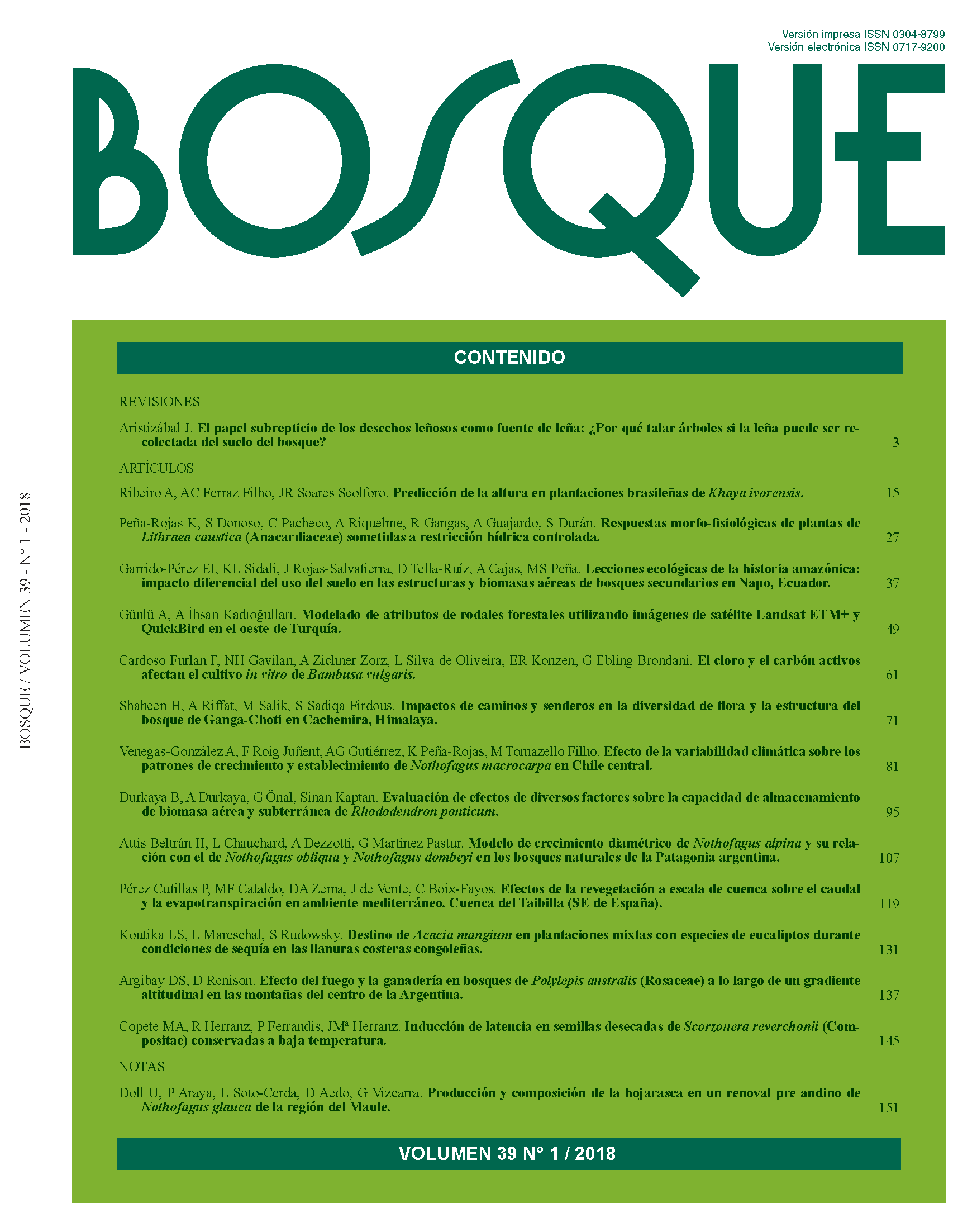Morpho-physiological responses of Lithraea caustica plants (Anacardiaceae) under restricted water conditions
Main Article Content
Abstract
Lithraea caustica (litre) is an endemic tree species of Chile that grows in a Mediterranean climate, characterized by a summer with low water availability in the soil, high solar radiation and high temperatures. In these conditions, litre should have physiological mechanisms to survive under restricted water conditions. To investigate these mechanisms we performed an experiment under natural summer conditions. The plants were assigned to three different treatments: Permanent irrigation, moderate water restriction and severe water restriction. During the study, we evaluated predawn leaf water potential and predawn leaf water relative content, photosynthesis, gas exchange and chlorophyll fluorescence. Additionally, we evaluated the growth and accumulation of biomass. Under restricted water conditions, litre developed the osmotic adjustment mechanism, presenting a high cellular turgor and a leaf water relative content over 80 %. This strategy allowed litre to tolerate the low soil water contents observed during the phase of maximum water restriction. It also repaired damages caused during the photoinhibition period observed at noon, with values of Fv/Fm always equal to or higher than 0.8. This study provides valuable information of litre attributes that could be applied in future scenarios of reforestation and climate change in Mediterranean areas.

